
views
Sorting Keys
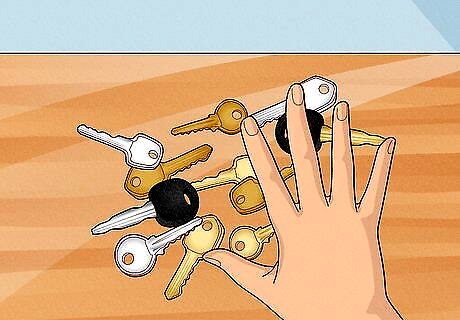
Gather all of your keys. Search high and low in your house, car, and office for all of your keys that have found homes in different nooks and crannies. It is important to find all of your keys so you can organize them in one sitting. Once you have located all of your keys, set them out in front of you.
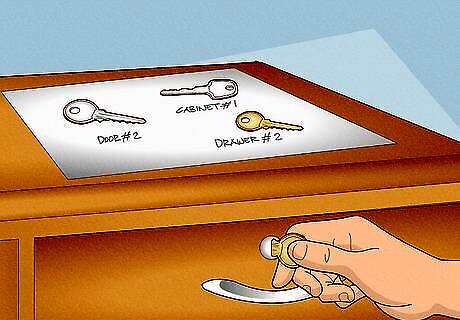
Identify every key’s function. Make sure you can identify each key’s purpose. That key you don’t know the use for? Try it out in a few locks or ask friends or family members if they recall its purpose. If there are still keys that you cannot identify after testing them, dispose of them. You may find that a neighbor has given you an extra key to their home that you might have forgotten about. Therefore, exercise caution before disposing of an unknown key. Most metal recycling centers accept keys or you can always reuse your old keys in an art project.
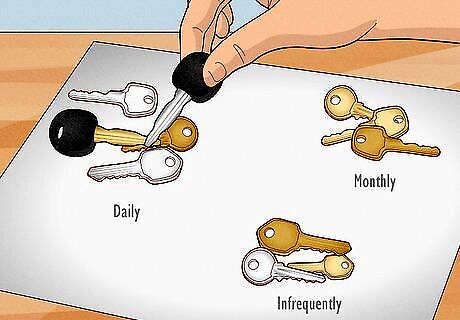
Group keys by frequency of use. Sort your keys into groups according to how often you use them: daily, weekly, or those that are used perhaps only once a month. This will allow you to more easily decide what keys you should carry with you regularly. Keys that are used on a daily basis include car, house, or mailbox keys. Keys that are used only a few times a month might be keys for gym lockers or bike locks. Infrequently used keys include safety deposit keys or keys to another person’s home.
Decluttering Your Keychain
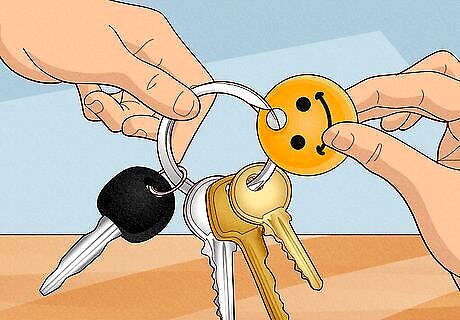
Remove non-keys. You don’t want to be lugging around a super heavy keychain so you should remove items cluttering your key rings, such as membership cards, miniature tools, and decorative items. Remove items that do not have a function or that you rarely use to reduce the bulk of your keychain. This will make finding specific keys easier.
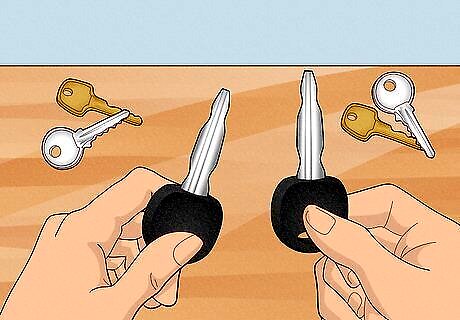
Identify duplicates. You should sort out duplicate keys, such as car keys. Then place these keys together on a keychain in a safe place.
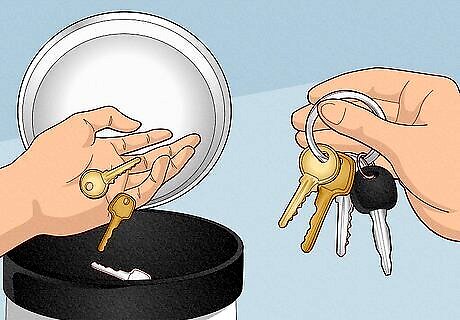
Remove keys that are no longer used. Haven’t used a key in many years? Dispose of keys like this that no longer have any value to you. You may find that you have keys from old homes or workplaces that are no longer necessary for you to own.
Getting Creative
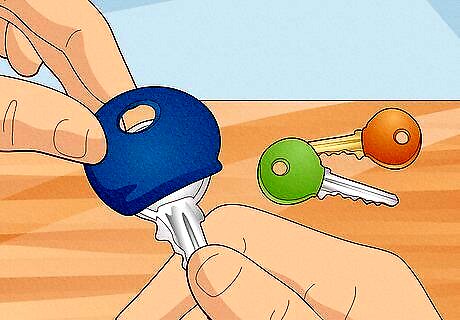
Assign a color code. Purchase key covers/caps in your favorite colors as a way to identify the general use of keys. Place the same colored key covers on all keys with that same function, and this will help you quickly find the key you need on your keychain. For example, you might differentiate keys by color for your home, for other people’s homes, or for work. You can also color code at home by painting the tops of keys with nail polish.

Label keys. If you were having trouble remembering the function of several keys, attach a label to those for easier identification in the future. You can purchase a key tag or ring from office supply stores on which you can write the key’s function. Labeling keys will also ensure that you do not keep keys that are no longer needed. For example, if you throw out an old jewelry box with a lock, the corresponding key's label will remind you to throw the key out as well.
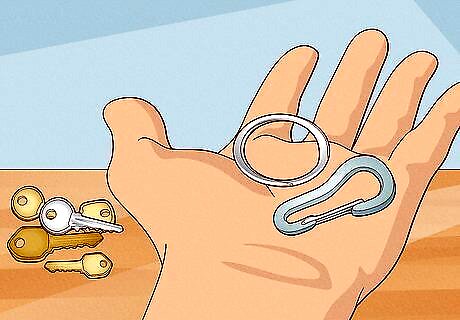
Purchase keychains. Once you have determined how many groupings of keys you have, you’ll need keychains for them. There are a variety of keychains you might choose: a standard ring keychain, a carabiner, a pocket clip key system, or a speciality keyring, such as a box that stores keys out of sight. You can also make your own simple keychain with a zip tie. Don’t enjoy bulky, noisy keys? Look for a speciality key system that will store your keys compactly and without any noises. If you’re feeling crafty, make a key storage system yourself by removing the tops of keys and storing them in a swiss army knife. Some keychains come with a part that detaches so you can easily add or remove another set of keys to it. This might be a good option if you want to be able to attach or remove keys that are used more infrequently to your daily keychain.
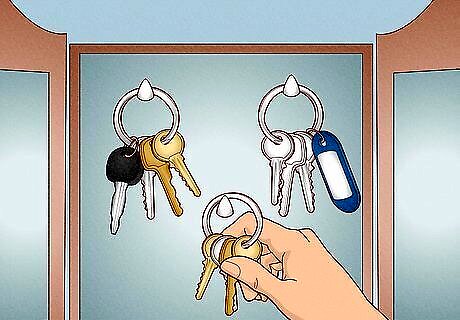
Put keys away. Find a designated home for each of your groups of keys so you can quickly locate them. You can get creative with this by finding a unique key organizing rack that you purchase or make yourself. If you want your keys out of sight put them together in a cabinet with hooks or a drawer organized with dividers so the keys will not get lost. If you have sensitive keys, such as one for a personal or bank safe, place your keys out of sight in a drawer. Label lovers can place labels on key hooks for different members of your household.


















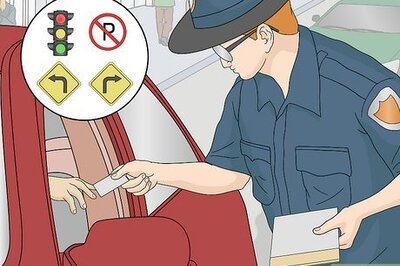

Comments
0 comment